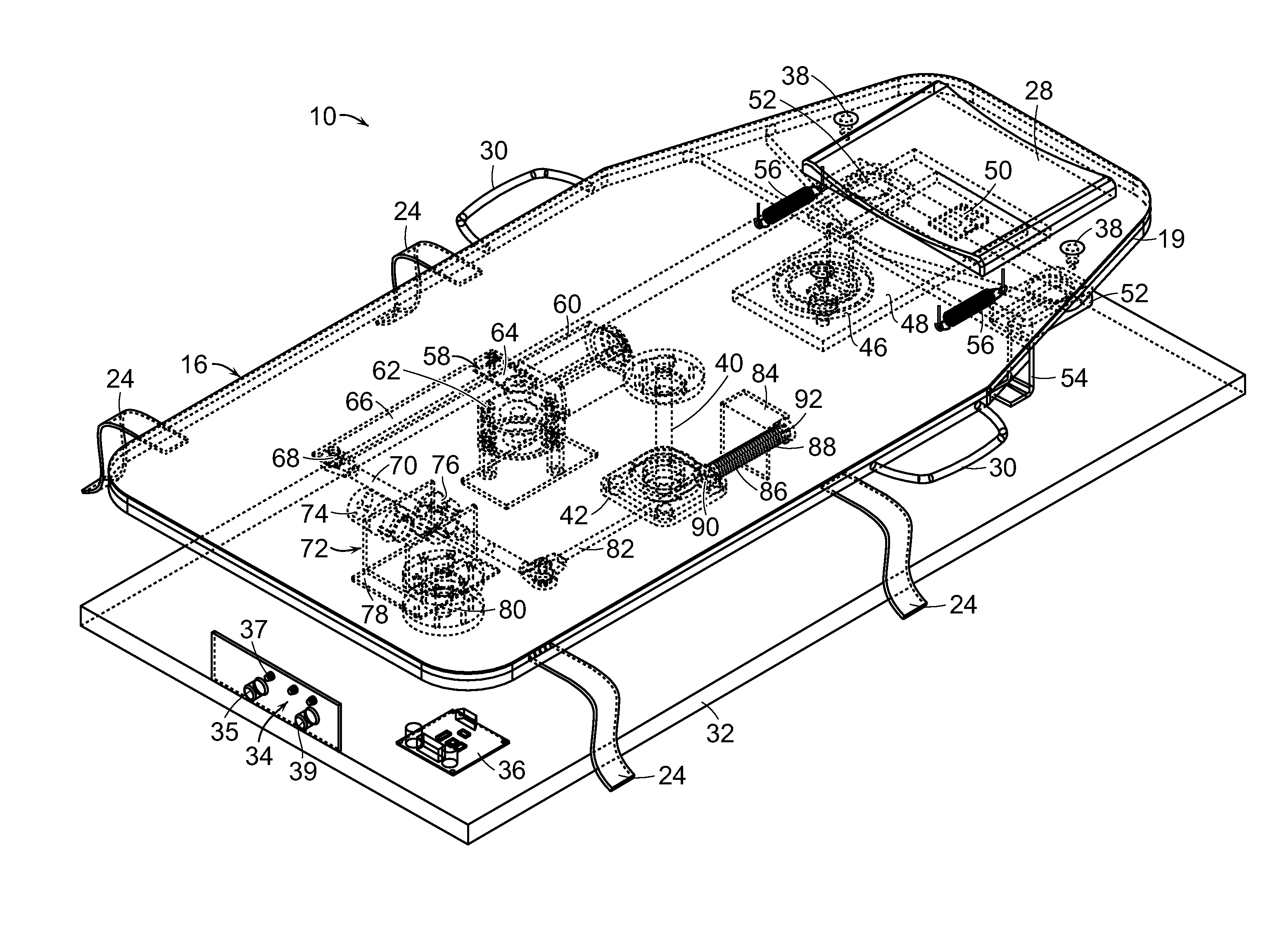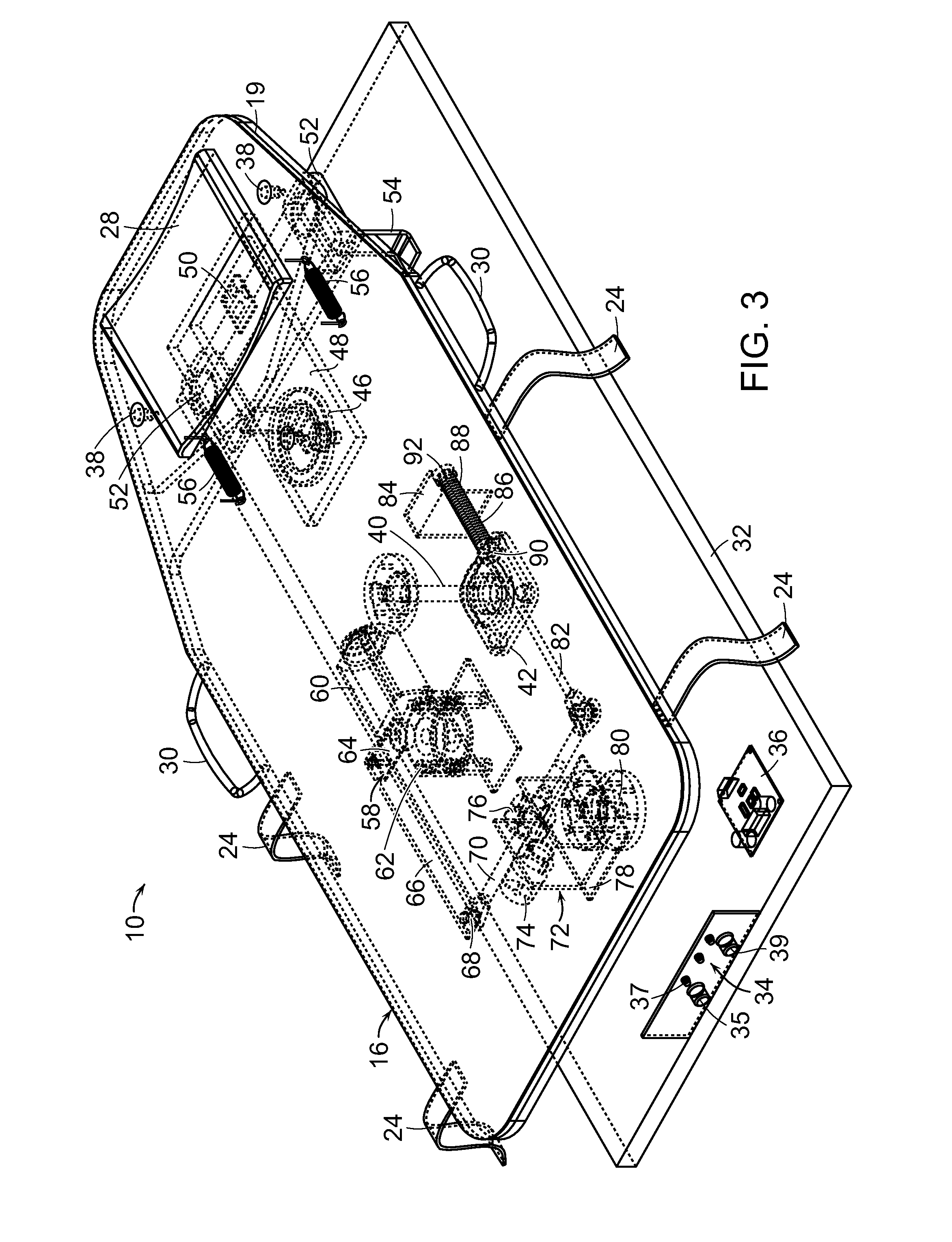Infant crying and parental exhaustion are often demoralizing and lead to marital conflict,
anger towards the baby and impaired job performance.
Swaddling also inhibits startling and flailing, which often interrupts sleep and starts / exacerbates
crying.
Since the
nominal level of a stimulus needed to reach the triggering threshold of the calming
reflex differs from one child to the next, failure to exceed a particular child's threshold level often results in a total absence of a calming response.
For example, slow smooth motion may calm one upset infant, yet be too subdued to calm another.
However, despite the convenience and availability of swaddling, rhythmic motion and sound, these methods fail to calm and promote sleep in a large portion of the infant
population because they are not being applied correctly.
However, this is problematic because sharing a
bed with a parent has been proven to raise an infant's risk of Sudden Infant Death Syndrome (SIDS) and accidental suffocation (which has been increasing by 14% per year for approximately twenty years).
The
hazard of
bed sharing is further elevated if the parent is extremely fatigued.
Like inebriation, exhaustion reduces adult judgment and responsiveness.
For this reason, sleeping with an exhausted parent further increases the SIDS risk associated with
bed sharing and further increases the suffocation risk (e.g. from accidental overlaying of the parents body over the infant's head).
Other behaviors that exhausted parents engage in to calm crying and promote sleep also directly raise the risk of SIDS and suffocation (e.g. falling asleep with the baby on a couch, placing the baby on the
stomach to sleep).
However, cribs are problematic.
Babies sleeping supine in cribs have a higher risk of plagiocephaly (flattening of the
skull), which may require expensive and inconvenient
medical treatment, and may result in a permanent
deformity.
In an attempt to improve
infant sleep in cribs, parents have employed several methods (prone sleeping, swaddling, rocking motion, sound), however each is problematic.
Swaddled babies can roll to the
stomach position (prone), which is associated with an 8-19 fold
increased risk of SIDS.
Rocking motion delivery systems (e.g. swings, cradles and hammocks) all present problems.
When sitting in a swing, a baby's head can roll forward and create an
airway obstruction.
Sound delivery devices (e.g. fans, air filters, hair driers, sound machines and
white noise CDs) may be cumbersome and expensive and the volume, quality or
frequency profile of the sound they produce may be excessive or too different from
in utero sound to be effective.
This product allowed the cradle to come to rest at an angle, in a partial swing position, which resulted in multiple infant deaths.
These and other current infant calming / sleep devices deliver fixed and unchangeable motion and sound.
This is a problem because each baby has a different mix of sound and motion that most efficiently calms the child and promotes sleep.
Another problem with fixed motion and sound infant calming / sleep devices is that each baby has a unique level of motion and sound that induces calming and sleep most efficiently.
For example, slow rocking may reduce sleep latency for one infant, yet be too subdued to do so in another infant.
Still another problem with fixed motion and sound infant calming / sleep devices is that the intensity of the stimuli needed to activate the calming
reflex and induce calm and sleep varies substantially as a child's state changes.
Further, current infant calming / sleep devices do not continue all night long; do not deliver optimal sound and motion for triggering the calming
reflex; do not increase and decrease their
sensory input in a step-wise fashion to vary the
sensory input intensity to give the baby the most effective level of stimulation; lack the ability to reduce the
sensory input over time to wean a baby off the stimuli as he or she ages.
 Login to View More
Login to View More  Login to View More
Login to View More 


